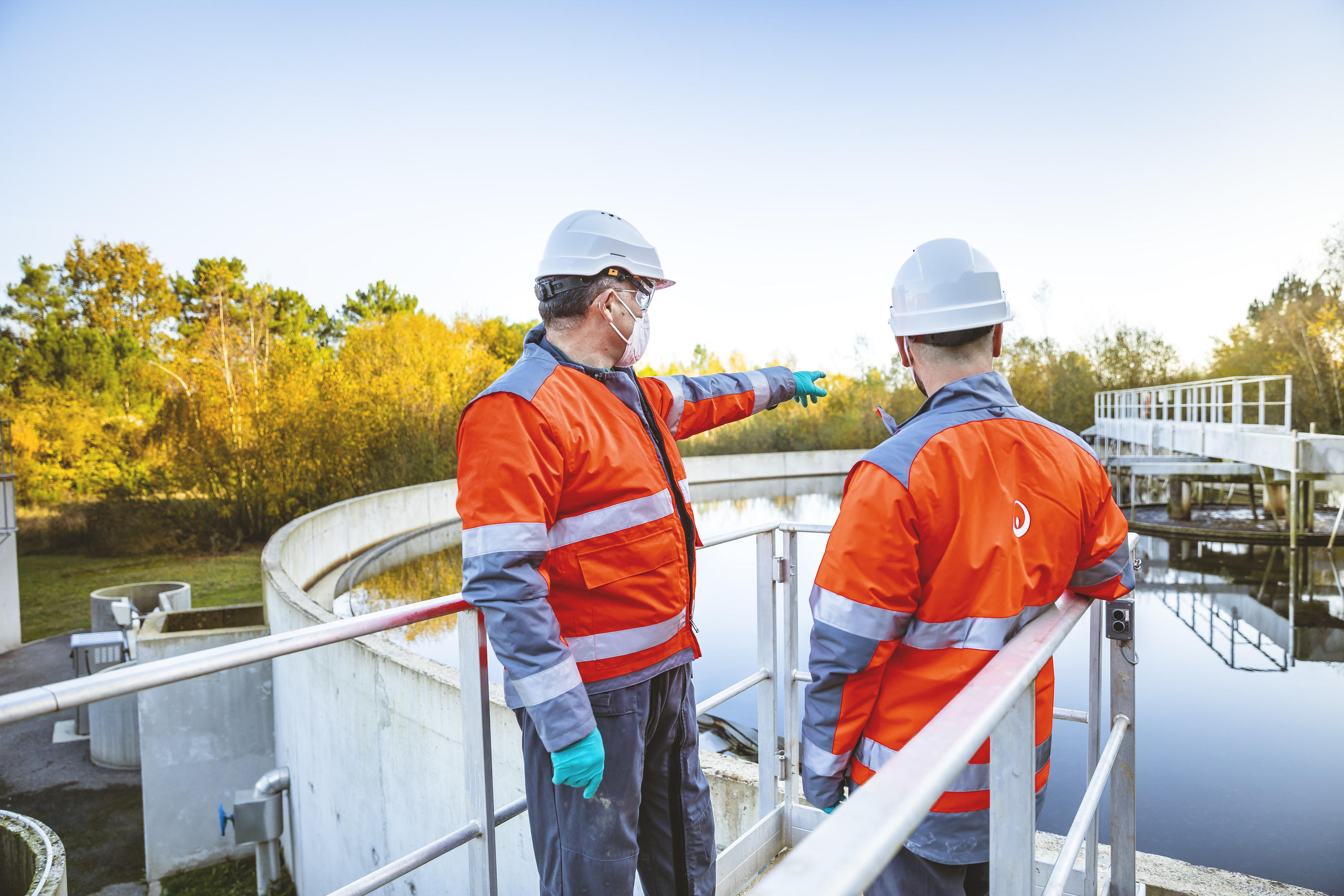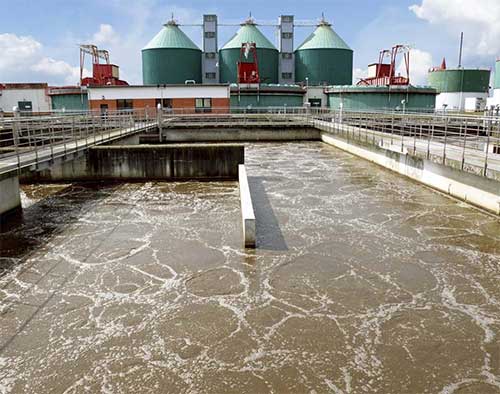Industrial Waste Water Treatment-- Eco-Friendly Solutions for Water Recycling
Industrial Waste Water Treatment-- Eco-Friendly Solutions for Water Recycling
Blog Article
Technologies and Advances in Industrial Waste Water Therapy Technologies
The landscape of commercial wastewater treatment is going through a transformative shift, driven by technologies that enhance both effectiveness and sustainability. As governing standards advance, the assimilation of AI and maker discovering right into wastewater administration systems guarantees to ensure and enhance operations compliance.
Overview of Waste Water Treatment Technologies
Wastewater treatment innovations incorporate a series of techniques made to remove contaminants from industrial effluents prior to their launch right into the atmosphere. These innovations are critical for keeping eco-friendly equilibrium and ensuring compliance with ecological regulations. The primary classifications of wastewater treatment consist of physical, chemical, and organic methods, each offering distinctive purposes based on the nature of the contaminants present.

Biological therapy approaches employ microorganisms to break down raw material, making them specifically effective for organic-rich effluents. Methods like activated sludge and biofilm activators harness the all-natural degradation capabilities of germs, causing substantial reductions in biochemical oxygen need (FIGURE)
Advanced Filtration Techniques
Advanced purification strategies represent a vital evolution in the realm of commercial wastewater treatment, improving the performance of contaminant elimination procedures. Industrial Waste Water Treatment. These methods include an array of technologies, consisting of microfiltration, ultrafiltration, nanofiltration, and reverse osmosis, which give consecutive barriers for different fragment sizes and chemical structures
Microfiltration and ultrafiltration make use of membrane layer systems to eliminate suspended solids, germs, and larger organic particles, enhancing the top quality of effluent before additional treatment. Nanofiltration links the space between ultrafiltration and turn around osmosis, successfully getting rid of divalent ions and natural compounds, therefore decreasing the lots on downstream processes.
Reverse osmosis provides the highest possible level of filtration by allowing just water and small particles to travel through its semi-permeable membranes, making it excellent for reclaiming top notch water from commercial effluents. Recent advancements in membrane modern technology, consisting of the growth of even more resilient and fouling-resistant products, have actually substantially enhanced operational efficiency and minimized prices.
Integrating these advanced purification techniques not only boosts the general treatment procedure but also adds to sustainability efforts by making it possible for water reuse and source healing in commercial setups. (Industrial Waste Water Treatment)
Biological Therapy Technologies

Additionally, the growth of crafted biological systems, such as membrane bioreactors (MBRs), integrates biological therapy with advanced membrane layer address filtration. This assimilation enables for greater effluent quality and minimized footprint, making it ideal for space-constrained industrial facilities. Innovations in genetically crafted microbes have actually additionally arised, improving the biodegradation of particular pollutants, such as pharmaceuticals and heavy steels, that are typically testing to remove.
In addition, the implementation of bioaugmentation approaches, where beneficial microorganisms are introduced to improve the existing biological treatment procedures, has shown encouraging results in boosting treatment performance. These advancements collectively indicate a pattern towards more lasting and reliable biological treatment methods that can adapt to the progressing intricacies of industrial wastewater streams. As industries remain to focus on environmental compliance, these organic advancements will play a critical function in wastewater management.

Source Recovery Methods
In commercial setups, the combination of source healing techniques has ended up being significantly important for improving sustainability and decreasing waste. These approaches concentrate on removing beneficial materials and energy from wastewater streams, thus changing prospective toxins right into reusable resources.
One popular technique is vitamins and mineral recuperation, where nitrogen and phosphorus, often present in excess in wastewater, are caught and exchanged fertilizers. This not only lowers environmental influences yet additionally gives a round economy option for farming applications. Furthermore, modern technologies such as anaerobic food digestion enable the conversion of natural waste into biogas, a sustainable energy source that can counter fossil fuel use in commercial operations.
Additionally, advanced filtering and membrane technologies promote the recovery of commercial by-products such as salts and steels. These recouped materials can be rehabilitated into production procedures, reducing the demand for virgin resources.
Future Trends in Waste Water Monitoring
As industries progressively focus on sustainability, the future of wastewater monitoring is readied to undergo substantial transformations. Technical innovations, such as expert system and equipment learning, will certainly enable much more efficient monitoring and administration of wastewater systems. These innovations can anticipate maintenance demands, maximize treatment processes, and improve decision-making, ultimately decreasing functional expenses and environmental effect.
In addition, the combination of round economic situation concepts will certainly play a critical function in wastewater management. Industries are anticipated to move in the direction of systems that not only treat wastewater however additionally recover valuable resources, such as nutrients, water, and energy. This shift will lessen waste and promote the reuse of materials, aligning with global sustainability objectives.
Arising therapy techniques, such great site as membrane bioreactors and advanced oxidation processes, will even more improve the efficiency of wastewater therapy, allowing this article for higher high quality effluents suitable for reuse. Furthermore, governing frameworks are likely to evolve, highlighting stricter requirements for wastewater discharge and motivating industries to take on ingenious therapy solutions.
Final Thought
In verdict, the evolution of industrial wastewater treatment technologies shows a substantial shift in the direction of enhanced performance and sustainability (Industrial Waste Water Treatment). Innovations in innovative filtering strategies, organic treatments, and source healing techniques highlight the sector's dedication to environmental stewardship.
The landscape of industrial wastewater therapy is going through a transformative change, driven by developments that enhance both efficiency and sustainability.Wastewater treatment modern technologies include a range of approaches created to get rid of pollutants from commercial effluents before their launch into the environment.Harnessing the power of organic procedures has actually led to substantial developments in the treatment of industrial wastewater.Additionally, the application of bioaugmentation methods, where useful germs are presented to improve the existing organic therapy procedures, has actually shown appealing results in boosting treatment efficiency. These developments collectively indicate a fad in the direction of even more lasting and effective biological treatment approaches that can adapt to the evolving intricacies of commercial wastewater streams.
Report this page